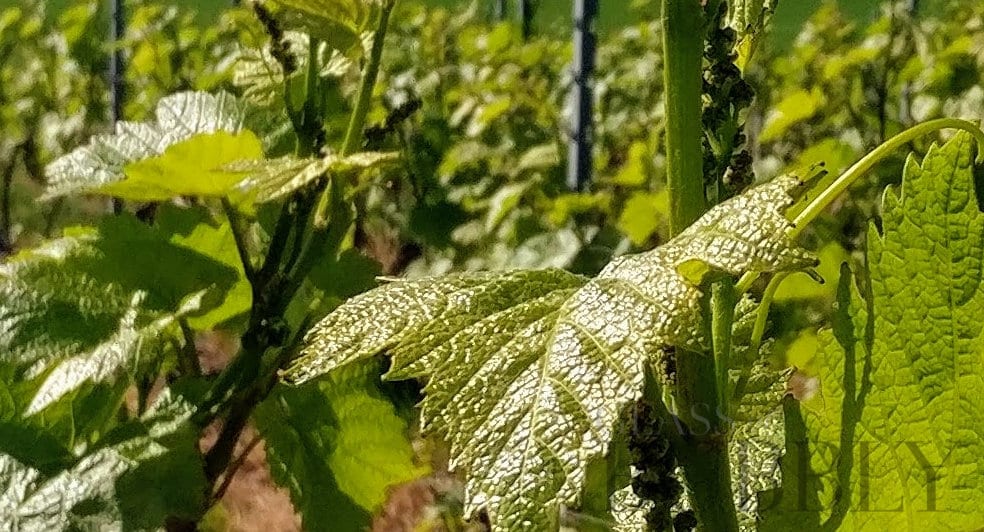Is the Cru System a ‘Cru’cial guide to quality?
11th September 2014

The Échelle des Crus vineyard rating system was introduced in the early to mid twentieth century to categorise individual grape producing villages “crus” in Champagne, providing them with a percentile score.
The intention of the system was to ensure growers received a fair price for their grapes. However, since its inception just 17 villages have received the 100% rating and therefore classification as Grand Cru. Forty-four villages have attained a rating between 90% – 99% gaining Premier Cru status, even if this is just for their Chardonnay or Pinot Noir variety. According to our original Larmat Vinicole Atlas dated from 1944, the cru system descended as low as 6th Cru with a rating less than 50% in an area of the Vallée de la Marne farmed by the excellent biodynamic producer Françoise Bedel who is producing truly wonderful cuvées.
Each harvest-time a price was set for a kilo of grapes and the villages received their percentage of that price according to their rating on the Échelle des Crus. For example, the Premier Cru village of Écueil was rated at 90%; therefore growers received 90% of the set price for their grapes.
Whilst we do not know to what extent this practice exists today (we imagine contracts between the Négoces and Récoltants relate more to quality), it does seem that despite its clear unfairness and outdated inadequacies, much is still made of the Cru system – even by Champagne houses and producers, with many displaying Grand Cru or Premier Cru on their labels.
How an entire village can be given the same rating when it consists of multiple plots with differing geology, farmed differently by people with different methods and skill levels is clearly no longer suitable for a modern champagne. Surely the fairest system would be to rate each plot individually according to its own merits and the manner in which it is tended? Only then can the Cru system maintain its validity and integrity.
The overriding factor which determines grape quality must surely be the vision, endeavour, methods and skill of the grower? Yes geology can play its part but it is not the single defining factor. Likewise, a plot may have everything in its favour and deemed as Grand Cru but farmed poorly will yield poor quality grapes.
To have no Pinot Meunier villages or any villages from the southern regions of the Aube, Côte des Bar or Sézannes classified as high as Premier Cru is quite frankly insane.
So according to the Échelle des Crus the following villages which are home to some excellent and often World Class domaines are apparently not even worthy of Premier Cru status. On the Montagne de Reims and Petite Montagne de Reims: Gueux – Jérôme Prévost, Courmicy/Cauroy-lès-Hermonville – Francis Boulard, Merfy – Chartogne-Taillet, Villers-aux-Nœuds – Emmanuel Brochet. In the Vallée de la Marne: Baslieux-sous-Châtillon – Franck Pascal, Cerseuil – Dehours et Fils, Villers-sous-Châtillon – Collard-Picard, Crouttes-sur-Marne – Françoise Bedel, Oeuilly – Tarlant, Fossoy – A. Robert. Épernay and the Côteaux Sud d’ Épernay: Épernay – Janisson-Baradon, Chavot – Laherte Frères. Aube/Côte des Bar and Sézanne: Celles-sur-Ource – Roses de Jeanne/Cedric Bouchard and Cheurlin L & S, Buxières-sur-Arce – Vouette et Sorbée, Montgeux – Jacques Lassaigne, Les Riceys – Olivier Horiot, Buxeuil – Vincent Couche, Talus-Saint-Prix – Jeaunaux-Robin, Fouchères – Cœssens Largillier, Congy – Ulysse Collin. These are just a handful of examples of talented vignerons who clearly produce top-quality grapes and indeed superb Champagnes.
So whilst many houses and producers still adorn their labels with Grand Cru or Premier Cru, this alone is not an indication of quality. It is therefore important to do ones homework and get to know the domaine and their cuvées.
After all, the crucial factor is the vigneron!
![]()
Glass of Bubbly
Executive editor of news content for the website Please enjoy the articles that we share - We hope you find our love for Champagne & Sparkling Wines both interesting and educational.
